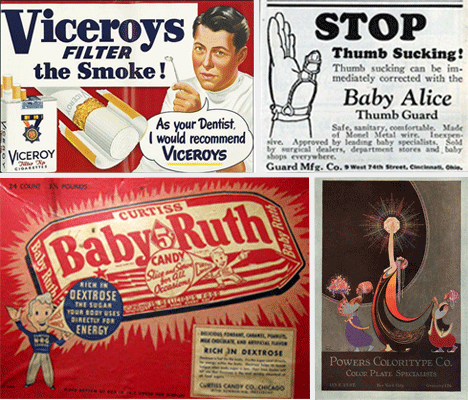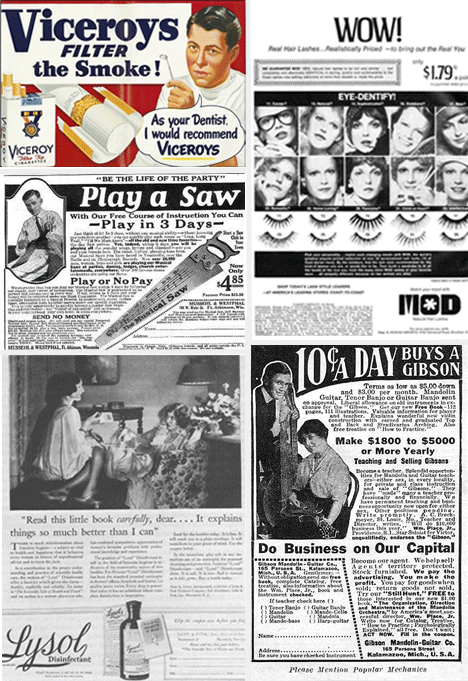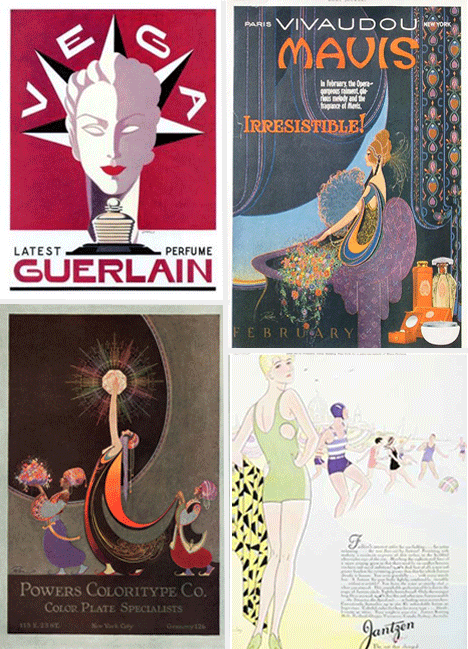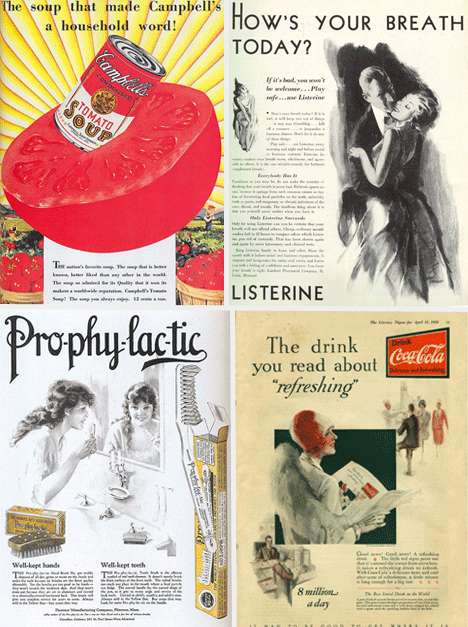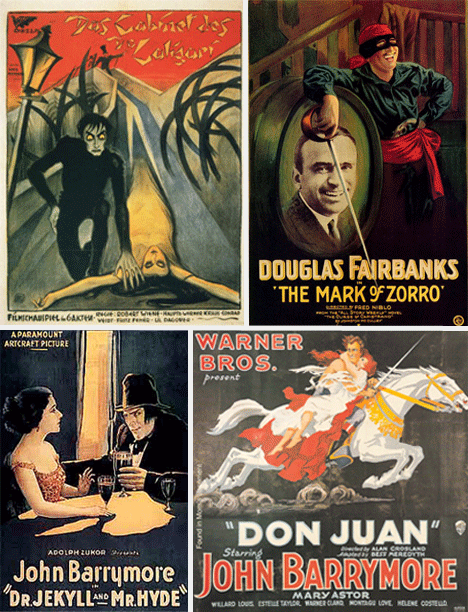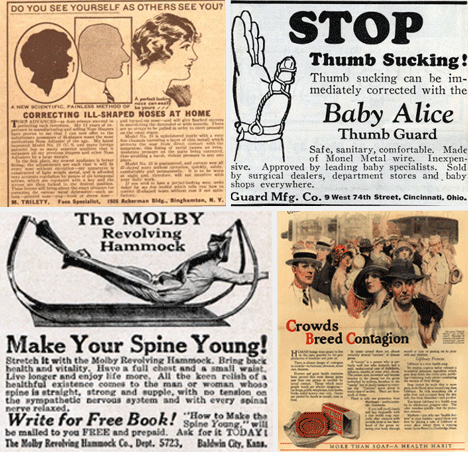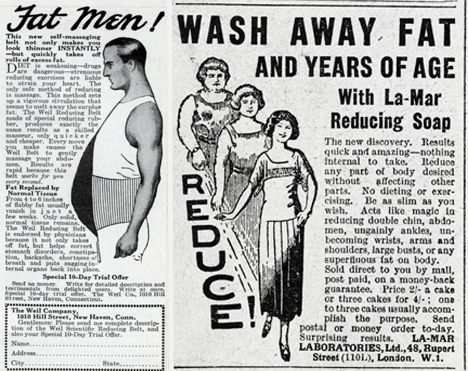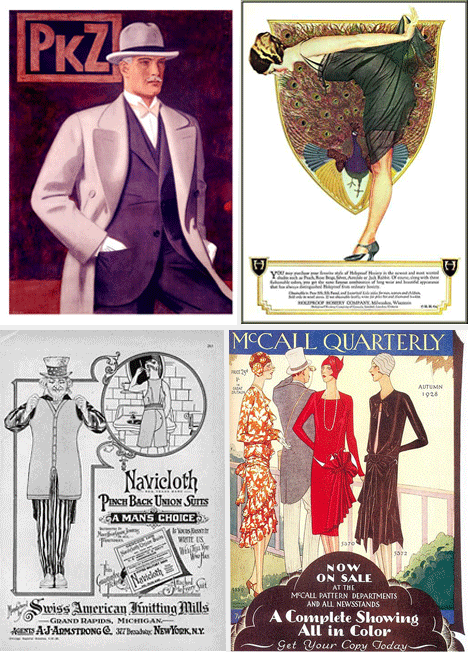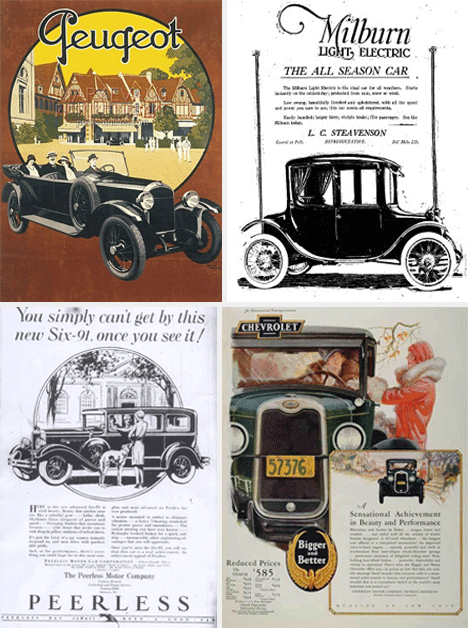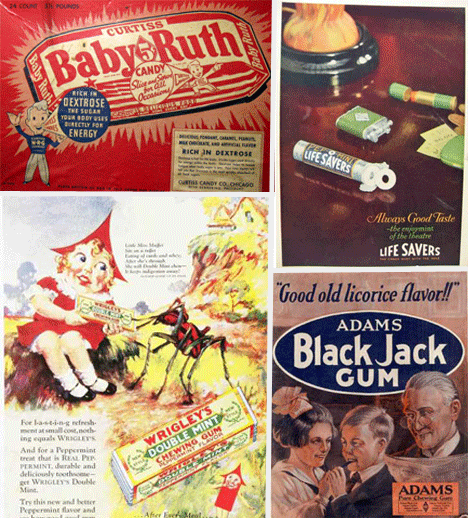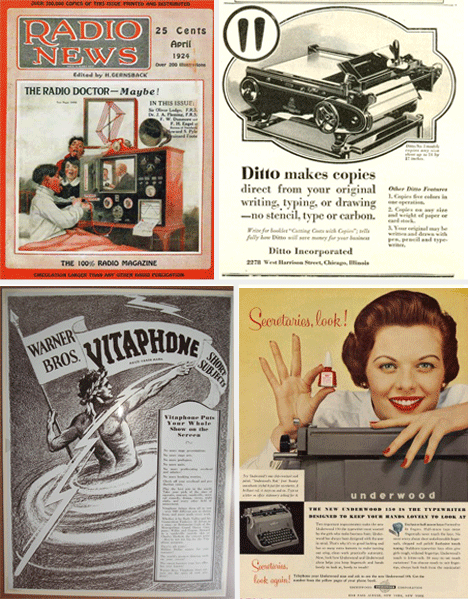The roaring twenties were a time of great prosperity, as the economy boomed after World War I. The nation was intent on having fun; a jazz obsession swept the nation, and prohibition did little to dampen the national spirit. Advertising at the time reflected the wealth of the nation, and a naivete and optimism that science was on the precipice of a golden age. Here are 40 ads from the 1920’s that reveal a nation intent on sprinting into the future:
(Images via daylife, kitchen retro, saw lady, ibiblio, harpguitars)
The 1920’s were a strange time full of wacky fads, and too much trust in unproven science. Advertisers were beginning to figure out what worked and what didn’t, and their enthusiastic ad copy would attempt to sway even the most incredulous purchasers. Saws were sold as instruments (why work? it’s time for fun!), and lysol was subtly branding itself as a contraceptive (really, go have some fun). What better time to learn an instrument or light up some cigarettes and hit the town?
(Images via found in mom’s basement, thefedoralounge, artdecoblog, vintageadbrowser)
The art deco style was seen as elegant and refined… the peak of modernity. Ads from this time period are actively sought by collectors because of their distinctive look.
(Images via artdecoblog, artdecoblog, ioffer)
Many of the brands we find around our houses today were already hitting their stride in the booming domestic market. Many would flourish, but not all would be able to ride out the rises and dips of the American market.
(Images via myinsulators, tjsrecords)
The nation was looking forward, and was brimming with optimism and confidence. World War I was over, and scientific inquiry and noble pursuits would propel the United States into a idyllic future. It was almost as if a utopia was right around the corner, and efforts like Prohibition (“The Noble Experiment”) were signs of a nation trying to purify itself in preparation (ironically providing fuel for “vice” to flourish in the hands of the mob).
(Images via english 1101, imp awards, cinemacom, found in mom’s basement)
A booming economy fed the rapidly growing film industry. The introduction of sound in film in the mid to late 1920’s only served to make the industry explode into a national obsession. Classy film posters, hand painted and elegant, advertised the newest films to hit the big screen.
(Images kitschykitschycoo, imafulltimemummy, found in mom’s basement, the paper collector)
Scientific breakthroughs had brought man to the verge of utopia. An incredible lack of regulation led to some of the strangest quackery our nation has seen. New inventions were flooding into stores that promised to reshape one’s face, fix an ailing back, or protect one from any virus. Strange, but well intentioned, the populace had almost too much trust in “science”.
(Images via found in mom’s basement, ablongman)
Breakthroughs in science were so common, that ads gleefully espousing the healing and restorative properties of expensive soaps were everywhere. One could lose weight simply by rubbing a specialty soap on fat deposits once a day!
(Images via picsdigger, squidoo, vintage skivvies, artdecoblog)
High fashion was huge in the 1920’s, with European looks sweeping the nation. The flapper style was a mix of the formal designs and carefree, radical attitudes. Men tried to look dapper but remain comfortable, and society as a whole seemed to have a dress code.
(Images via mediastorehouse, sandusky history, kilduffs, squidoo)
Factories that had been used years before to create tanks and airplanes were put to good use pumping out automobiles for a populace eager to spend and put the conservatism of the previous decade behind them. A car was like a personal chariot, and the special relationship between Americans and their cars truly began to appear.
(Images via mitzi’s collectibles, attic paper, vintage ad browser)
Candy was everywhere, and it was healthy too! Baby Ruth bars were meant to be cut up like a delicacy, and their packaging touted its healthful benefits: “Rich in dextrose, the sugar your body uses directly for energy.”
(Images via boingboing, mike lynch cartoons, purple motes, pics digger)
State of the art office equipment, and the predecessors to the modern television were pouring off the shelves. Secretaries were given the most modern typewriters, and ditto machines were arming them with the capability to do their work better and faster.
